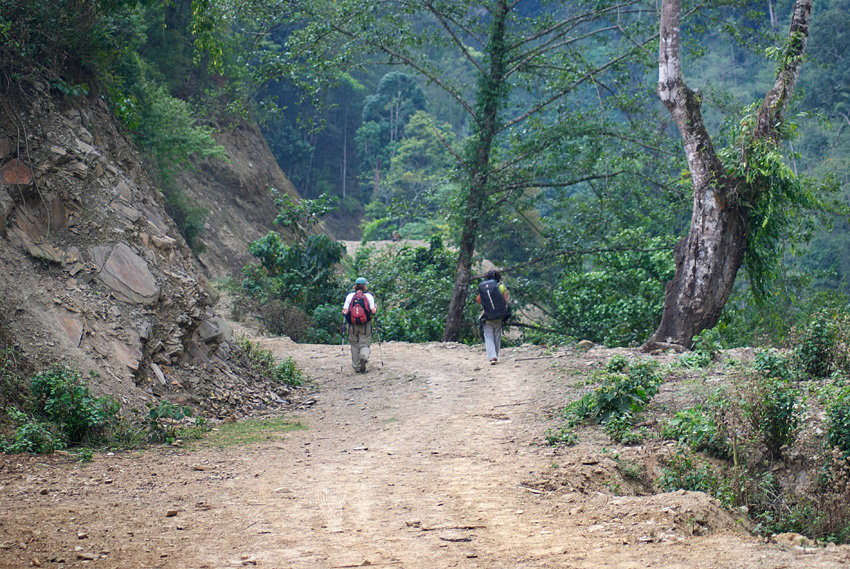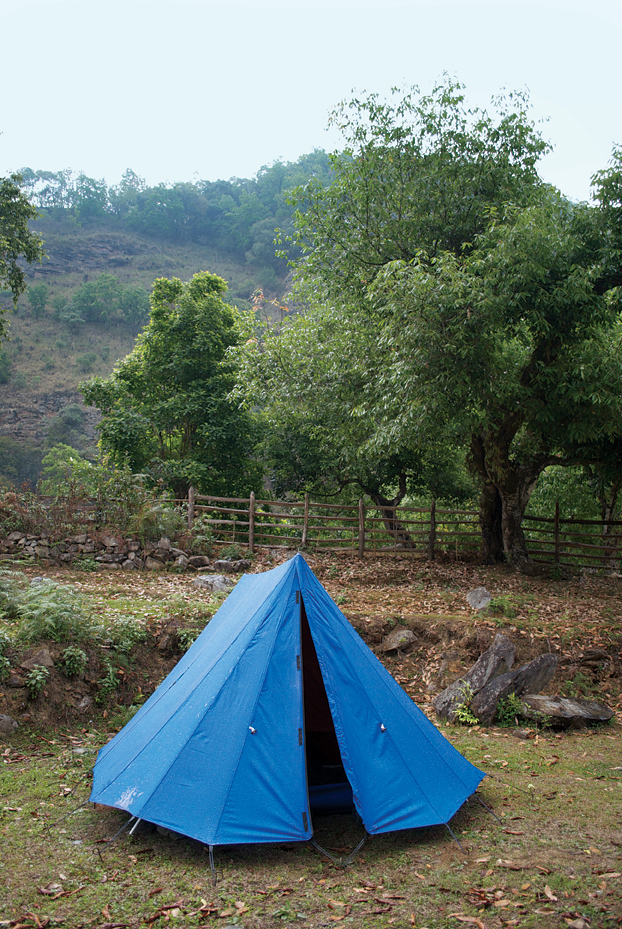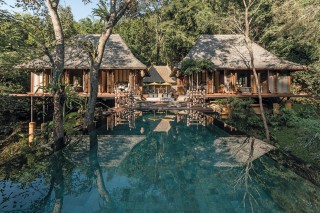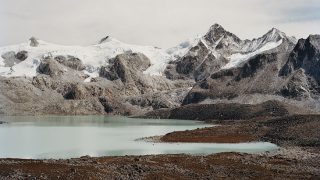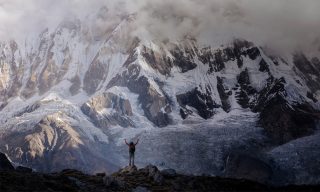While the trek is beautiful and filled with wildlife, most adventure travelers, with the ex-ception of hardcore birders, head for the high passes. But our six-day excursion, supported by porters and sturdy ponies, offers a great family alternative to the country’s more challenging alpine treks. We have plenty of fun wandering the rudimentary roads and rocky footpaths that traverse this rolling patchwork of dense, broadleaf jungle. Our route sticks between 1,000 and 2,000 meters above sea level, where we also encounter terraced rice and buckwheat fields and the odd citrus grove. We carry our own sleeping bags, pads, and water, but Drukpa’s crew handles the tents, setting them up at basic village campsites before we arrive.
The villagers charge campers a nominal nightly fee that includes use of mud-hut kitchens, thatched-roof dining areas, and water spigots. This gives Christina easy access to the local women, who wear Bhutan’s traditional woven dresses (kira) and cut their hair in blunt pageboy dos. Only rarely do we encounter men, who have either moved to larger communities for economic opportunity, or are out working in the surrounding fields. The women, though, happily discuss Khengkha vocabulary as well as their community traditions, including gambling games and religious rituals. Some mornings in camp, we get an additional dose of culture as the sound of trilling young voices penetrates our tent walls— kids setting off on the long hike to the nearest school.
Dark clouds obscure the sun over the Nabji Valley as we ready ourselves for a final research day with a big breakfast of toast and eggs, milk tea, and chocolaty Horlicks. It’s a cool morning and the school kids’ chatter has long faded. Christina tests her electronic gear, and I help Ursula lace up her hiking boots for a last tour.
Later, as Christina wraps up her interviews, a man with a shorn head and the now familiar ocher robes of a Buddhist monk appears, smiling slyly. After listening quietly, he invites us for a sip of the local moonshine, ara, made from fermented grain. Soon he shares with us a novel theory about the origins of Khengkha: that Guru Rinpoche, the revered saint credited with bringing Buddhism from Tibet to Bhutan in the eighth century, introduced the language as a series of religious mantras. Drukpa, acting as translator, tells us that outsiders (including himself) can’t understand Khengkha because it derives from these ancient songs.
Christina is skeptical, but she adds the story to her growing compendium of local lore. As the bottle gets passed around yet one more time, it turns out the holy man doesn’t drink ara, but keeps it as a repellent for venomous snakes found in the nearby fields. Drukpa says the villages’ schoolchildren carry canteens of alcohol for the same reason—to keep the vipers and cobras at bay.
Each of these factoids gets duly recorded—in Khengkha, in Dzongkha, and lastly in English as part of a first-of-its-kind Khengkha archive in this concealed Himalayan valley. And then, as the day winds down, evening brings a sort of proof that such folk wisdom, like the languages, is worth preserving. It’s the sound of carefree kids heading home from school, no snakes in sight.
Ultimately, for me, even without encountering any serpents, Bhutan’s wildlife proves as exciting as its village life. We see giant black squirrels, watch a troop of shaggy, terrier-size Assamese macaques scamper across a clearing, and spot endangered rufous-necked hornbills. And so, riveted to my spot on the trail by a clatter of stones from the dark forest above, I begin to imagine a leopard or tiger might be stalking me, ready to pounce. Still I see nothing. Then with a hoot, a golden langur—a globally endangered primate that is common in Bhutan—breaks through the forest canopy, swinging with muscular grace.
“That was awesome!” Ursula exclaims when I catch up to her on the trail. No need to convince her that Bhutan—for all the struggles that development brings—remains the happiest place on earth. It’s an assessment that’s hard to resist.
Journey to Bhutan (975-2/334-411) runs eight-day portered Nabji–Korphu treks from September through March, priced at US$1,960 per person, including three nights of hotel accommodation en route.
This article originally appeared in the December 2013/January 2014 print issue of DestinAsian magazine (“A Walk in the Clouds”)



